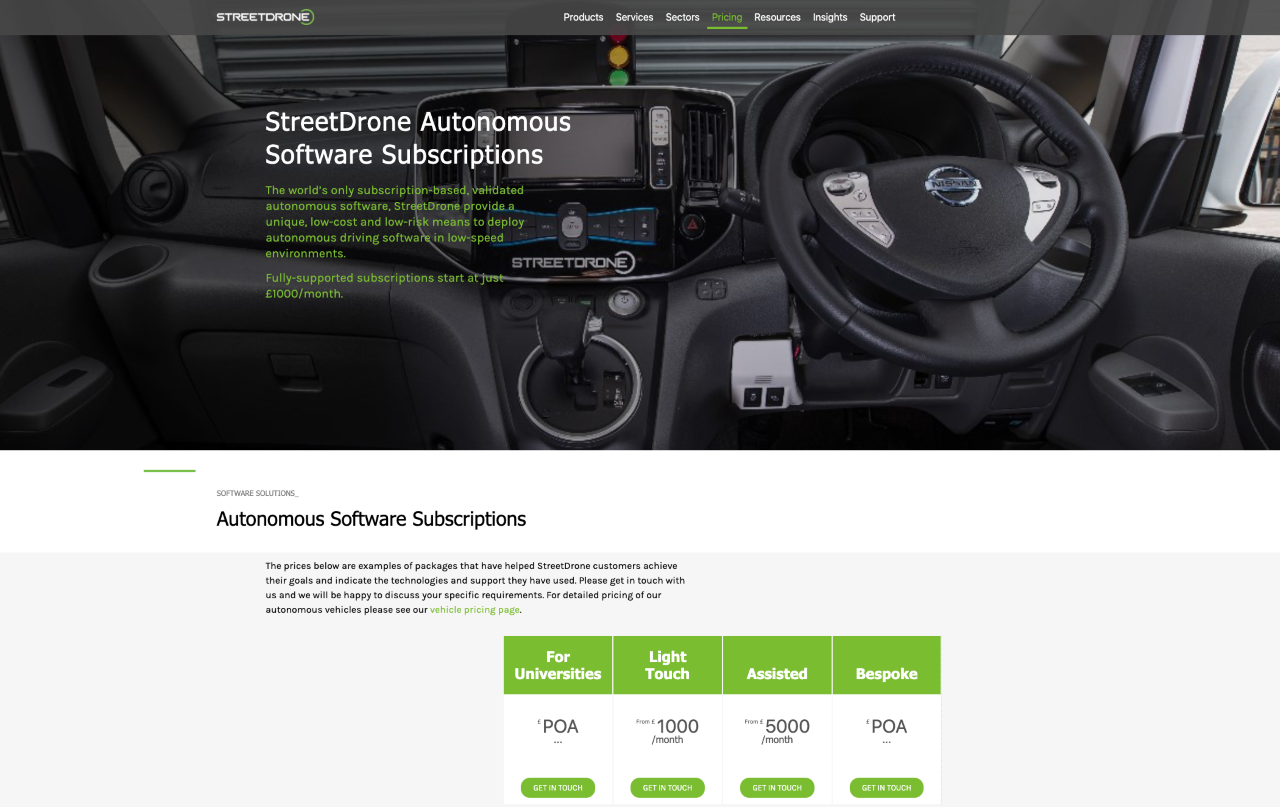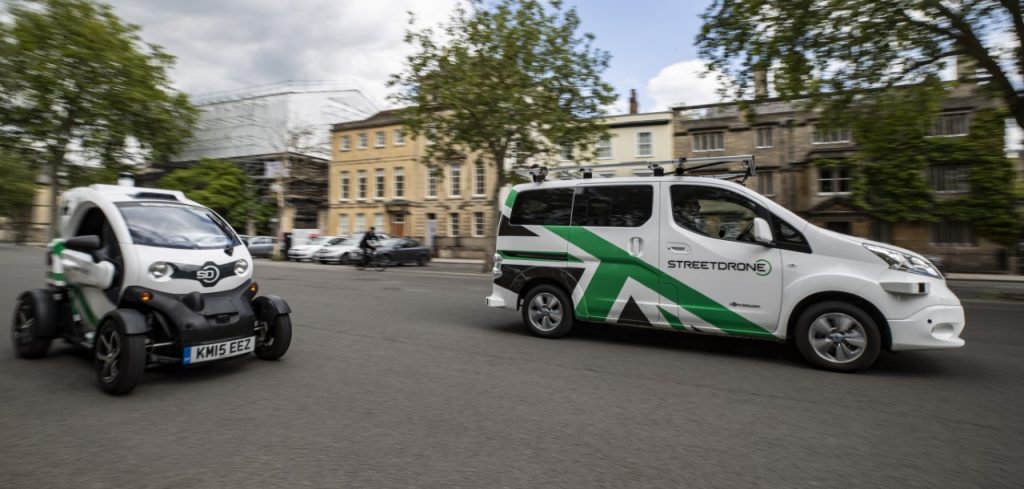The full-stack company is breaking down barriers to make a capitally intensive technology affordable and accessible. For £1,000 (US$1,300) a month, a supported and autonomous-ready software stack can be yours.
With even a cursory glance from a layman’s perspective, the whole business of driverless vehicles might at first sight appear to be a case of unfettered navel-gazing by technologists and engineers. After all, who exactly is it that will be able to afford to buy or run vehicles that drive themselves? Motorists are struggling to fund the leap to EVs, let alone AVs, while the light public transportation industry and last-mile delivery are premised on franchised business models that save the operator from making capital investments in the vehicles, instead transferring this obligation to private operator/owners.
So just where is this flood of money going to come from to make AVs commercially viable? The well-rehearsed argument from the AV industry is essentially twofold – firstly, removing drivers from vehicles in the commercial sector will reduce costs. And while removing this operating overhead won’t dent the capex required to buy an autonomous vehicle, the progressive reduction of cost as technologies become ubiquitous and commoditized will take care of the rest. And there you have it, the economic case to make AVs profitable.
The premise is, at best, weak. Some time ago, StreetDrone grabbed the headlines when it amortized the published Waymo investment funds of US$3bn across its fleet of 600 robotaxis and suggested that each vehicle might represent US$5m of cost. While the economics employed here are no more robust, the broad point is clear. It will be a jolly long wait for the technologies required for sophisticated AVs to become anything near commercially viable for any use case short of traveling to the moon.
So while the industry is head down, chasing the next AI hazard perception solution or new lidar tech, StreetDrone has focused on solutions to make autonomous technology a reality for businesses.
The first step the company took to reduce cost and increase access to autonomous solutions was to build speciality around low-speed applications. It is speed that kills commercial viability, and in most cases, getting a parcel delivered or a road swept at breakneck speed is not a contingent factor for the use case. Moreover, even at slow speeds, autonomous passenger services can double or triple average urban traffic journey times, so even with the most impatient form of cargo, speed is not important and getting rid of it plunges the technology requirement and cost by orders of magnitude.
The second step StreetDrone took was to embrace open-source as a solution to reduce software costs. This well-traveled path has delivered exponential advances for small incremental costs based on mutual interest and collaboration, powering the rise of globally significant platforms such as Linux.
 In September, StreetDrone moved a stage further toward bringing AV tech within reach of SMEs, public bodies running regional municipal services and businesses with immediate needs, but without bloated R&D budgets. The solution, again driven by the StreetDrone mantra of making autonomous technology affordable and accessible, was to borrow from the SaaS industry and release AV software on a subscription basis. This move allows companies to adopt AV solutions without making capital expenditure to buy enduring software licences, and with a short, three-month minimum tie-in, enables trials not only of the technology but also of the business case, without obligation.
In September, StreetDrone moved a stage further toward bringing AV tech within reach of SMEs, public bodies running regional municipal services and businesses with immediate needs, but without bloated R&D budgets. The solution, again driven by the StreetDrone mantra of making autonomous technology affordable and accessible, was to borrow from the SaaS industry and release AV software on a subscription basis. This move allows companies to adopt AV solutions without making capital expenditure to buy enduring software licences, and with a short, three-month minimum tie-in, enables trials not only of the technology but also of the business case, without obligation.
The tiered subscription service starts at just £1,000 (US$1,300) per month and does more than just provide an affordable way to access the technology – the service also provides inclusive access to expert engineering capability to help design applications for use in specific markets and environments. This removes the need for customers to invest in technical expertise and focus instead on the commercial realization of the benefits of autonomous solutions and their own value propositions.
The pre-compiled software stack itself is platform-agnostic, which removes the need for specific hardware platform investment, and operates through a user-friendly GUI that dispenses with the need to hire extensive, skilled engineers. Moreover, the solution has been designed to run on any AV and is not tied exclusively to StreetDrone vehicles.
The package, called Enterprise ASLAN, also includes a range of training modules to enable businesses to progressively grow in-house capability to suit their specific commercial needs, including safety driver and software engineering training.
“In developing this solution, we have focused on the needs of business and enterprise rather than being led by technical innovation,” explained StreetDrone’s CEO, Mike Potts. “We’ve inverted the way we look at autonomy and considered it from a commercial perspective and tried to remove all of the hurdles that might stop a business from adopting AV solutions. So we started with cost and risk and removed these from the equation. Next, we considered skills and expertise and offered this as an integral element of the subscription with a pathway to transfer this knowledge to the customer when their AV program flourishes.”
Enterprise ASLAN is an ODD-specific, on-vehicle validated, compiled and stable version of the ASLAN open-source software with enhanced regression testing and unit testing, simpler user interfaces, advanced documentation, remote or on-site dedicated engineering support, tutorials and simulation training and support, with the option to add ODD and safety case documentation.
The aim of StreetDrone’s subscription service is to move autonomous solutions within reach of last-mile deliveries, campus transportation, ports and quayside freighting, bus and coach depot movements, parking lot management, airside support services, urban passenger transportation and contactless medicine deliveries.
“What companies like Waymo are pursing is laudable and no-one appreciates the challenges better than other AV engineers like us. What frustrates and motivates us in equal measure at StreetDrone is that we don’t want these long horizon projects to become defining for our industry. There are close-at-hand opportunities for autonomy to be more than just science fiction so long as we are prepared to break down the costs and align them far more rigorously with the commercial benefits,” Potts concluded.


